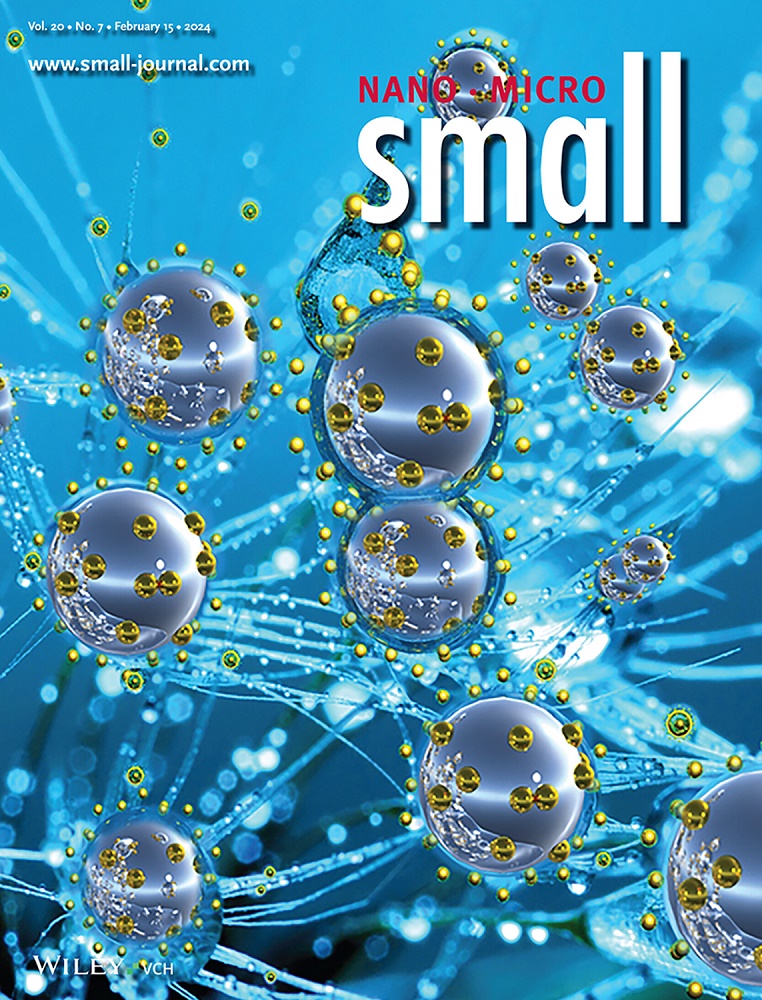Multi-Hydroxyl and Chloric Buried Interface Bridges Enable Synergistically High-Efficiency Perovskite Solar Cells
IF 13
2区 材料科学
Q1 CHEMISTRY, MULTIDISCIPLINARY
引用次数: 0
Abstract
Defects at the interface between perovskite and carrier transport layer are ≈100 times more prevalent than those within perovskite bulk, potentially serving as non-radiative recombination centers to adversely affect carrier extraction and transport. Here, a green pyridoxine hydrochloride (PDHC) is introduced into SnO2 quantum dots (QDs) solution. The resulting surface chloritization of SnO2 QDs not only passivates the interface defects, thereby strengthening the interface contact among SnO2 QDs, but also chemically interconnects SnO2 QDs with perovskite, thereby forming a very stable interlayer. These promote to establish the carrier transport bridges at the buried interfaces for efficient electron-transportation and -extraction. Under its organic group coordination, high-quality perovskite films are formed via heterogeneous nucleation on the perovskite precursor film, effectively suppressing bulk defects, which mitigates the nonradiative recombination and extends the carrier lifetime. Consequently, the PDHC-based perovskite solar cells achieve an improved efficiency from 24.18 to 25.07%. After 2520 h storage, the unencapsulated devices retained ≈90% of their initial efficiency, exceeding those of control devices which retained only 65% of their initial efficiency, along with 9.4 and 3.8-fold improvement for thermal and light stability.

求助全文
约1分钟内获得全文
求助全文
来源期刊

Small
工程技术-材料科学:综合
CiteScore
17.70
自引率
3.80%
发文量
1830
审稿时长
2.1 months
期刊介绍:
Small serves as an exceptional platform for both experimental and theoretical studies in fundamental and applied interdisciplinary research at the nano- and microscale. The journal offers a compelling mix of peer-reviewed Research Articles, Reviews, Perspectives, and Comments.
With a remarkable 2022 Journal Impact Factor of 13.3 (Journal Citation Reports from Clarivate Analytics, 2023), Small remains among the top multidisciplinary journals, covering a wide range of topics at the interface of materials science, chemistry, physics, engineering, medicine, and biology.
Small's readership includes biochemists, biologists, biomedical scientists, chemists, engineers, information technologists, materials scientists, physicists, and theoreticians alike.
 求助内容:
求助内容: 应助结果提醒方式:
应助结果提醒方式:


